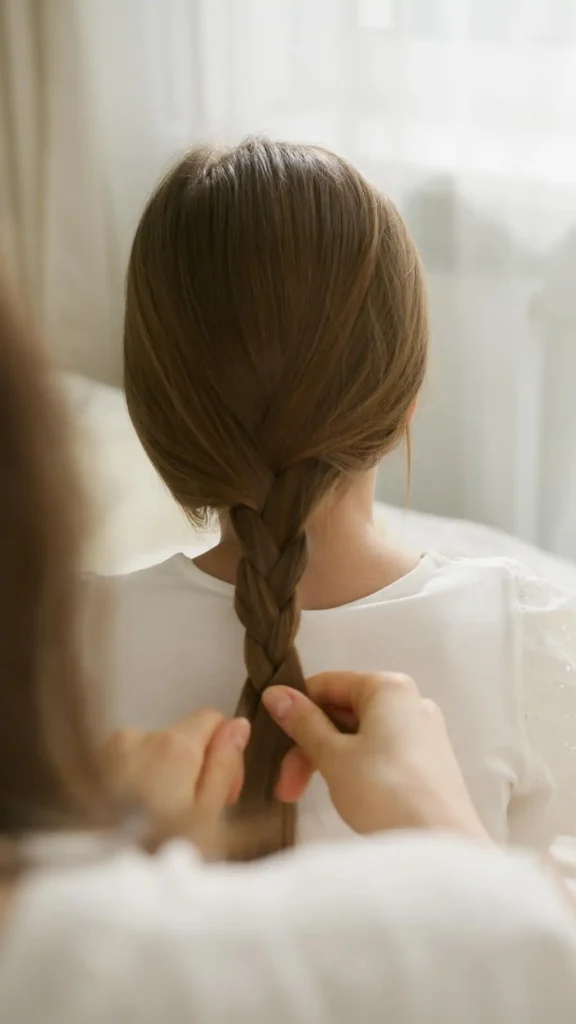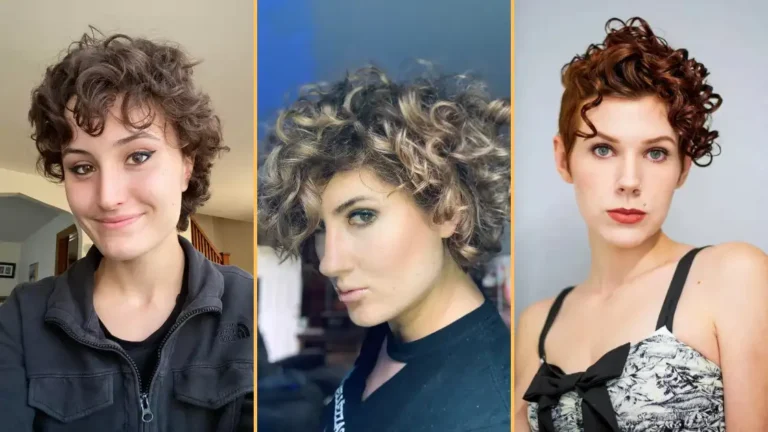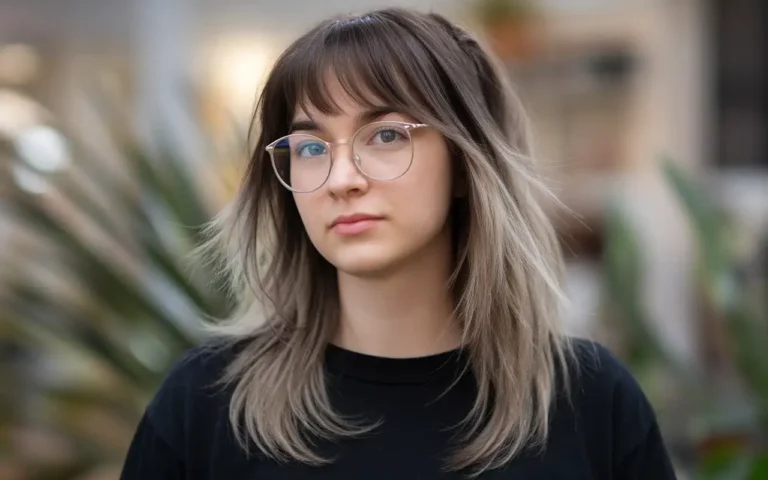Protective Hairstyles That Prevent Hair Damage
Your hair deserves better than constant styling damage and breakage. Protective hairstyles offer a solution that keeps your strands healthy while looking amazing.
These styles minimize manipulation, reduce friction, and give your hair the break it needs to grow stronger and longer.
Box Braids: Your Hair’s Best Friend

Box braids represent one of the most versatile protective styles you can choose. When you install box braids properly, you protect your hair ends completely.
You create neat, square-shaped sections that keep your natural hair tucked safely away from environmental damage and daily manipulation.
The beauty of box braids lies in their longevity. You can wear them for six to eight weeks without worrying about daily styling.
This extended wear time gives your hair follicles a chance to rest and recover from previous damage.
The synthetic or human hair extensions wrap around your natural strands, creating a barrier against harsh weather, friction from clothing, and accidental tugging.
You’ll find that box braids work exceptionally well for active lifestyles.
Whether you’re hitting the gym, swimming, or simply going about your busy day, your hair stays secure and protected without requiring constant attention.
Bantu Knots: Ancient Protection with Modern Appeal
Bantu knots offer you a protective style that doubles as a stunning fashion statement.
You section your hair into small portions and twist each section into a tight coil that sits close to your scalp.
This traditional African hairstyle protects your hair by keeping every strand contained and moisturized.
The twisted formation prevents your hair from rubbing against pillows, clothing, or other surfaces that cause friction damage.
You can wear Bantu knots for several days or even up to a week with proper care.
The style maintains its shape well and requires minimal daily maintenance, making it perfect for busy schedules.
When you take down Bantu knots, you’ll discover beautiful, defined curls that add another styling option to your routine.
This two-in-one benefit makes the initial time investment worthwhile for your hair’s health and your styling versatility.
French Braids and Dutch Braids: Classic Protection
French and Dutch braids provide excellent protection while maintaining a polished, professional appearance.
You weave your hair close to the scalp, distributing tension evenly and preventing excessive pulling on any single section.
These braiding techniques keep your hair ends tucked away and protected from environmental damage.
The close-to-scalp positioning also reduces the amount of hair exposed to UV rays, pollution, and other harmful elements.
You can adapt these classic braids to suit any occasion. The versatility of French and Dutch braids extends to their duration as well.
A single French braid down your back works perfectly for casual days, while multiple smaller braids create a more intricate look for special events.
You can wear them for a day or keep them in for several days with proper nighttime protection and minimal touch-ups.
Twist Outs and Braid Outs: Gentle Styling Solutions
Twist outs and braid outs offer you protective styling options that work beautifully on natural hair textures.
You create these styles by twisting or braiding damp hair and allowing it to set overnight or longer.
The setting process keeps your hair in a protected state while it dries. The resulting style typically lasts several days with proper maintenance and refreshing techniques.
This method eliminates the need for heat styling tools that can cause significant damage to your hair cuticles and moisture levels.
When you unravel the twists or braids, you reveal gorgeous, defined texture without subjecting your hair to harsh manipulation.
You’ll appreciate how these styles work with your hair’s natural texture rather than fighting against it.
This harmony between your hair’s needs and your styling choices promotes healthier growth and reduced breakage.
Cornrows: Time-Tested Hair Protection

Cornrows provide you with one of the most effective long-term protective styles available.
You braid your hair directly against the scalp in neat, parallel rows that can last for weeks with proper care.
The close-to-scalp braiding technique distributes weight evenly across your head, preventing stress on individual hair follicles.
This even distribution reduces the risk of traction alopecia and other damage caused by tight styling.
You can customize cornrow patterns to express your personal style while maintaining the protective benefits.
Simple straight rows work for conservative environments, while geometric patterns and curved designs make bold fashion statements.
Cornrows allow you to wash and condition your scalp easily while keeping your hair protected.
You simply focus your cleansing efforts on the exposed scalp areas between the braids, maintaining hygiene without disturbing the protective style.
Low Manipulation Updos: Elegant Protection
Low manipulation up-dos give you sophisticated styling options that minimize daily hair handling. The key to successful protective up-dos lies in using gentle hair accessories.
You gather your hair gently into buns, chignons, or twisted styles that keep your ends protected and your look polished.
These styles work particularly well for professional environments where you need to look put-together without spending excessive time on daily styling.
The protective benefits accumulate as you reduce the frequency of brushing, combing, and heat styling.
You can rotate between different up-do variations to prevent repetitive stress on the same hair sections.
Alternating between high buns, low chignons, and side-swept styles distributes tension patterns and promotes overall hair health.
You should choose seamless hair ties, silk scrunchies, and bobby pins with protective coating to avoid snagging and breaking your strands.
Protective Styling Tips for Maximum Benefits
You need to prepare your hair properly before installing any protective style.
Start with clean, well-conditioned hair to ensure your strands remain healthy throughout the protective period.
Moisturizing becomes crucial when your hair stays in a protective style for extended periods.
You should apply leave-in conditioners and natural oils to maintain optimal hydration levels without disrupting the style’s integrity.
Never install protective styles too tightly, as excessive tension can cause more damage than the style prevents.
You should feel comfortable wearing the style without experiencing headaches, scalp soreness, or excessive pulling sensations.
Regular maintenance keeps your protective styles looking fresh and functioning properly.
You need to wrap your hair with silk or satin materials at night and refresh edges and flyway’s as needed without over-manipulating the main style.
Choosing the Right Protective Style for Your Hair Type
Your hair’s texture, length, and current condition determine which protective styles will work best for you.
Fine hair benefits from lighter styles that don’t add excessive weight, while thicker hair can handle more elaborate protective options.
Consider your lifestyle when selecting protective styles. Your skill level and available time also influence the best protective style choices.
Active individuals need styles that withstand sweat and movement, while those with sedentary lifestyles can choose more delicate options that require careful handling.
Simple options like twist outs require minimal technique, while intricate braiding patterns might need professional installation for optimal results.
You should also factor in your hair’s growth goals when choosing protective styles.
Styles that you can maintain for longer periods provide more growth benefits, but only if you can care for them properly throughout their duration.
Common Protective Styling Mistakes to Avoid
You must avoid installing protective styles on damaged or extremely fragile hair.
Address any existing issues with deep conditioning treatments and protein therapies before committing to long-term protective styling.
Never leave protective styles in longer than recommended, even if they still look good. Focus on scalp cleansing and use dry shampoo between washes when necessary.
Extended wear can lead to matting, excessive tangling, and scalp issues that negate the protective benefits you’re seeking.
Avoid over-washing protective styles, as excessive manipulation during cleansing can cause frizz and premature style failure.
You shouldn’t neglect your hair’s needs while it’s in a protective style. Continue moisturizing, applying scalp treatments, and monitoring your hair’s condition throughout the protective period.
Maintaining Healthy Hair Between Protective Styles

You need transition periods between protective styles to assess your hair’s condition and provide intensive care.
Use these breaks to deep condition, trim damaged ends, and give your scalp a thorough cleansing.
Protein treatments become essential during transition periods, especially if you’ve been wearing protective styles for extended periods.
Your hair needs protein to maintain strength and elasticity for the next protective styling phase.
You should document your hair’s progress with photos and length checks during these transition periods.
This documentation helps you track growth, identify problem areas, and adjust your protective styling routine for better results.
Gentle detangling sessions during transition periods remove shed hair that accumulates during protective styling.
You need patience and the right tools to work through tangles without causing unnecessary breakage.
Conclusion
Protective hairstyles transform your hair care routine by minimizing damage while promoting healthy growth.
Choose styles that match your lifestyle and commit to proper maintenance for the best results.







